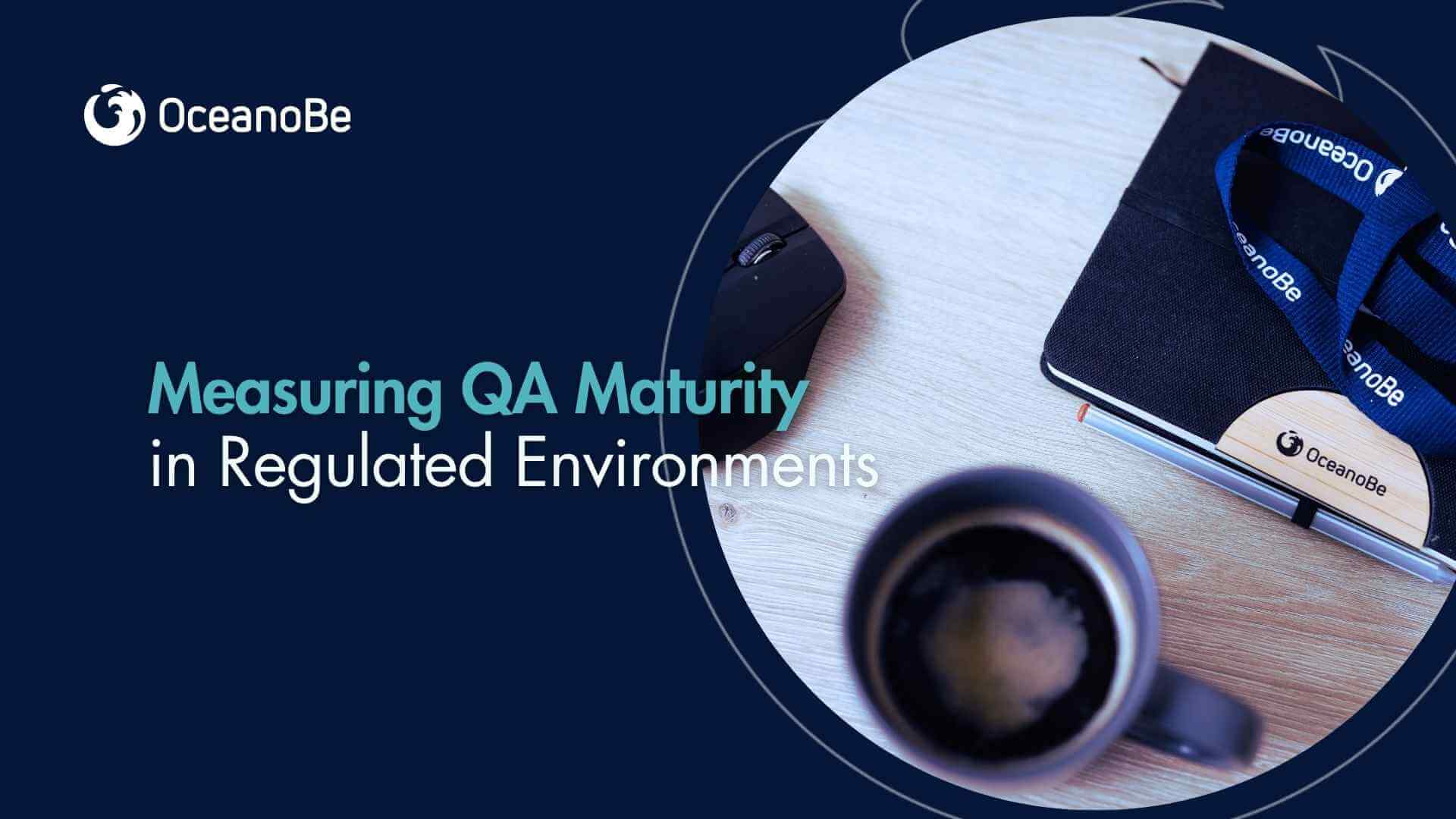Measuring QA Maturity in Regulated Environments
Fintech Test Metrics That Matter
Fintech Test Metrics That Matter

Quality is more than a target—it's a regulatory requirement for every fintech development. From digital onboarding flows to transaction processing engines, every line of code in a financial application must be validated for accuracy, resilience, and compliance. And as teams scale, so must the sophistication of their QA processes.
So how do we know our QA practice is mature enough to meet both business and regulatory expectations?
At OceanoBe, we work with fintech and banking clients who operate under strict legal, compliance, and performance constraints. This article shares the QA metrics that actually matter in these environments—those that not only measure technical excellence but also support audit-readiness, risk mitigation, and delivery predictability.
Financial systems are often subject to:
Regulatory audits (e.g., PSD2, PCI DSS, SOX)
Uptime SLAs and RTO/RPO targets
Strict security and data protection mandates
Multi-stakeholder reviews involving compliance, product, and legal teams
In this context, vague metrics like “number of bugs found” or “test cases executed” are not useful. Instead, mature QA functions focus on traceable, automatable, and risk-weighted indicators that align with both engineering and regulatory priorities.
High test automation coverage is a strong indicator of QA maturity—but only when measured strategically.
What to Measure:
Automated regression coverage (% of critical flows)
E2E vs. unit vs. integration coverage ratios
Test debt (manual test cases that should be automated)
Pipeline-integrated coverage with gating (e.g., fail if critical paths are untested)
Why It Matters:
In regulated environments, automation is not just a speed enabler—it's a risk reducer. It ensures that sensitive flows (like payment authorization, credit scoring, or KYC) are revalidated on every deployment with zero manual lag.
OceanoBe Insight:
In one of our PSD2-compliant projects, we prioritized automation around strong customer authentication (SCA) and payment initiation flows, ensuring 95%+ automated coverage before go-live. This enabled fast releases while satisfying external audit requests.
Time is critical—especially when defect remediation delays a release, which in turn blocks product launches or SLA-bound deliveries.
What to Measure:
Duration of full regression cycle (manual or automated)
Execution time per environment (UAT, pre-prod)
Time to resolve regression blockers
Frequency of failed test runs in CI/CD
Why It Matters:
A mature QA setup ensures that regression runs are fast, reliable, and repeatable. This enables faster delivery cycles and reduces the risk of last-minute surprises during go-lives or regulatory freeze periods.
OceanoBe Tip:
Teams should invest in parallel execution and environment provisioning (e.g., Docker, cloud-based test labs) to reduce cycle time without sacrificing coverage.
Auditability is where most QA processes in fintech fall short.
What to Measure:
Traceability from test case → requirement → regulation
Version control of test cases
Execution logs stored with metadata (date, user, environment)
Accessibility to compliance/audit stakeholders
Why It Matters:
Regulated environments often require QA teams to prove that a given requirement was tested, when, by whom, and with what result. This is not optional. Mature teams build test suites that are not just executable but auditable.
Best Practice:
Adopt a test management tool (e.g., Zephyr, TestRail, Xray) that integrates with your ticketing and CI/CD pipelines. Make sure every compliance-sensitive test case is tagged and mapped to the corresponding regulatory clause or epic.
Defect counts are only valuable if they reflect impact and visibility.
What to Measure:
Leakage rate (bugs found in UAT or production vs. in testing)
Defect severity ratios (critical vs. low)
Risk-weighted test case prioritization
Root cause categorization (code, config, env, spec gap)
Why It Matters:
You’re not just measuring “bugs”—you’re measuring trust. In banking systems, even one missed edge case can result in a compliance breach, a failed payment, or customer dissatisfaction.
Unstable tests introduce more noise than value.
What to Measure:
Flaky test ratio (failed but not reproducible)
Time spent debugging automation
False positive/negative rates
Test case aging (last updated date)
Why It Matters:
In mature QA teams, automation is treated like production code—with refactors, versioning, and code reviews. Poor test quality leads to alert fatigue, slower releases, and lower confidence in automation results.
Finally, QA maturity is not just about what gets tested—it’s about when QA is involved.
What to Measure:
QA involvement in grooming / requirement reviews
Percentage of defects caught pre-implementation (via test design, static analysis)
QA contribution to CI/CD gates and observability
Why It Matters:
Regulatory projects often involve edge cases, rule-based validations, and cross-domain implications. Having QA involved early leads to better coverage and fewer surprises.
In fintech and banking development, QA isn’t just a test execution team. It’s a compliance ally, a risk gatekeeper, and a delivery accelerator. Mature QA functions speak the language of both developers and regulators—and they back every deployment with metrics that show why it’s safe to go live.
As development complexity grows, and expectations for uptime, compliance, and velocity rise, these metrics become the difference between “good enough” and “truly production-grade.”